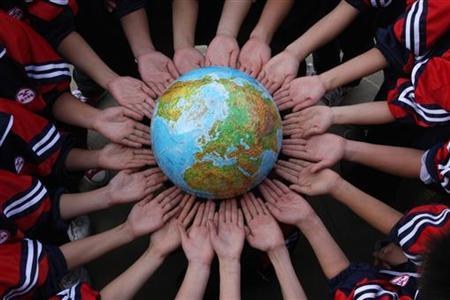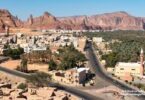Andrew Hammond
This year’s Earth Day, which will be celebrated on April 22, has an intriguing economic theme: “Investing in our Planet.” The goal of organizers is to engage more with businesses and other organizations in addition to the more than 1 billion citizens who participate in the annual event, to ensure they do their part so that everyone is accounted for and that everyone is accountable.
To this end, one of the key activities organizers are promoting is an effort to get more individuals and organizations to plant trees around the globe. Since 2010, Earth Day has helped oversee the planting of tens of millions of trees through the Canopy Project which works worldwide to strengthen communities.
However, the motto “Investing in our Planet” is interesting, too, in a wider sense given a growing body of opinion that putting a valuation on so-called “natural capital” is key to protecting the planet.
Natural capital accounting refers to the process of calculating the total stocks and flows of natural resources and services in a given ecosystem. Such accounting might occur in physical or monetary terms. This process can subsequently inform organizational and consumer decision-making, as each relates to the use or consumption of natural resources and land, and sustainable behaviors to preserve them.
The importance of this approach can be illustrated using the forestry example cited earlier. Previous research has underlined the significant value that resides in elements such as: soil stabilization that prevents a neighboring farmer’s soil being washed away; watershed protection that purifies a neighboring town’s water supply; flood prevention that protects a local village; and provisioning and pharmaceutical services that feed and medicate indigenous peoples, let alone carbon sequestration to mitigate global warming.
Collectively, such measures are estimated by some researchers to provide more than half of the value of a tropical forest. Yet many economists regard them as “externalities” which, although potentially immensely valuable, do not accrue to any individual property owner because the benefits are experienced by communities at large.
It has even been estimated that the cumulative loss of ecosystem services between the years 2000 and 2050 — at current rates of decline — will be approximately equivalent to losing 7 percent of global gross domestic product.
In seeking to better quantify and value natural capital in these ways, a price can be put on these “free goods” as a way of trying to protect them. The need for such an approach is illustrated by the alarming results of studies that reveal an increased decline of tropical forests resulting from illegal logging, agriculture, and mining activities.
Take the example of deforestation in Brazil’s Amazon rainforest. It increased by 14 percent in March 2023 compared with last year, according to preliminary official statistics. This is despite the fact that President Luiz Inacio Lula da Silva took office on Jan. 1 promising to put a stop to deforestation after his predecessor, Jair Bolsonaro, reduced environmental protection operations in the Amazon.
Overall, during the first quarter of this year Amazon deforestation was at the second-highest level on record for the period, with 844 sq. km destroyed. Only the figure for the first quarter of 2022 — 941 sq. km — was higher.
US climate envoy John Kerry has said that the world cannot meet its climate goals unless it protects the Amazon rainforest. Therefore, Washington announced in January that it intends to contribute to Brazil’s Amazon Fund, which supports conservation projects. Norway also pledged its support last month for Brazil’s efforts to attract additional donor countries for the fund.
Yet despite these imperfect international efforts to reduce deforestation and forest degradation, global developments are very concerning. Reducing carbon emissions is vital, and deforestation represents up to a fifth of global carbon dioxide emissions — more than that of the entire transport sector. Brazil and Indonesia alone account for more than half of the world’s emissions from forest loss.
In the Amazon, for example, about a fifth of its forests have been lost in the past six decades. It is critical we recognize that more than 1.5 billion people rely directly on the externality benefits (the outcomes of a given economic activity that affect a third party not directly related to the activity) that forests offer, including food, fresh water, clothing, traditional medicine, and shelter — not to mention the role that such forests play in stemming global warming.
The American and Norwegian announcements underline the fact that there are growing moves for developed economies with emission-reduction obligations to launch initiatives such as payments to developing countries where most of the world’s major intact forests are located, for the service they provide in absorbing carbon dioxide from the atmosphere and locking it away.
However, it is clear that national and global processes that could put the world onto a more sustainable path need a serious injection of post-pandemic political urgency.
This underlines the fact that the time is ripe for new energy and ideas that could create a foundation for genuine sustainable development, and secure post-pandemic prosperity for billions around the world.







